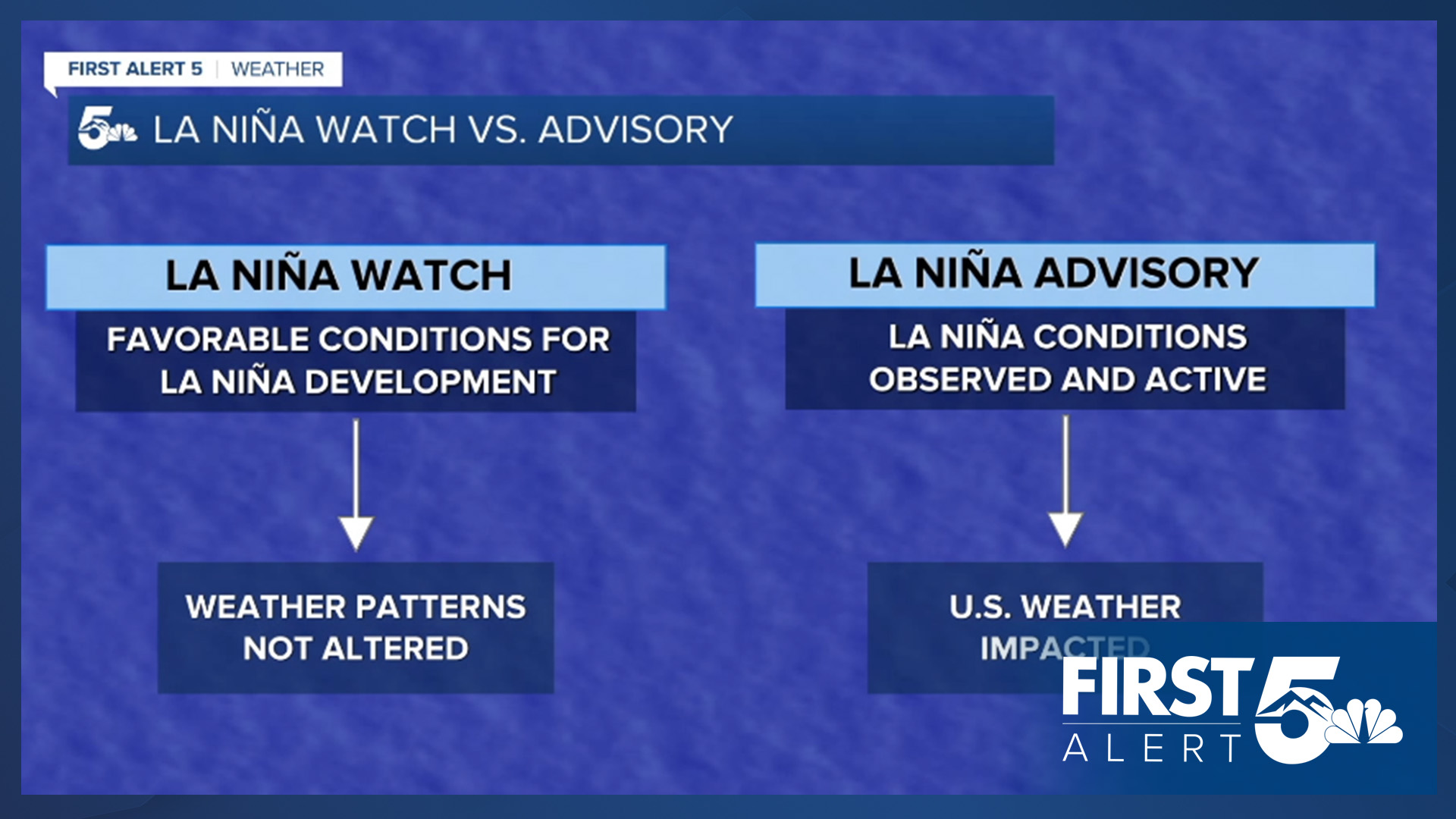A La Niña advisory is now active for the Eastern Pacific Ocean, marking a shift from the La Niña watch that has been in place for the past couple of months.
La Niña conditions occur when water temperatures in a specific part of the Eastern Pacific Ocean drop below normal levels.
While a La Niña watch indicates that conditions are favorable for development, an advisory means those conditions are actively present and measurable.
The National Weather Service defines this advisory based on specific criteria: temperatures must be at least 0.9 degrees Fahrenheit cooler than average over the last month, which in this case was September.
Additionally, these below-average temperatures need to persist for six consecutive months total, and the atmosphere must show changes associated with La Niña patterns.
These atmospheric changes have direct implications for Colorado's weather patterns. The state typically experiences warmer and windier conditions during fall under La Niña influence, with more complex weather changes expected during the winter months.
Residents who have noticed increased wind activity over the past few weeks can attribute this pattern to the Pacific Ocean's influence on regional weather systems.
This story was reported on-air by a journalist and has been converted to this platform with the assistance of AI. Our editorial team verifies all reporting on all platforms for fairness and accuracy.
____
Have a question or story idea you would like the First Alert 5 Weather team to consider? Email: weather@koaa.com
Watch KOAA News5 on your time, anytime with our free streaming app available for your Roku, FireTV, AppleTV and Android TV. Just search KOAA News5, download and start watching.





